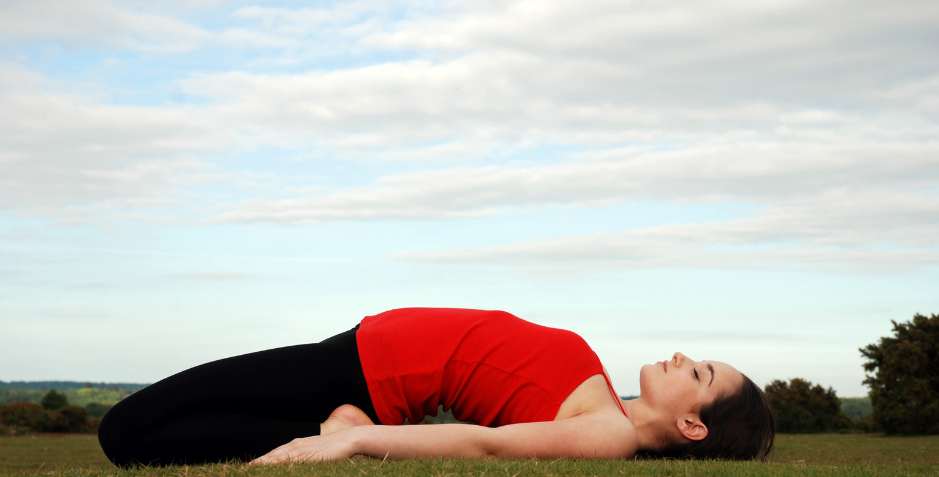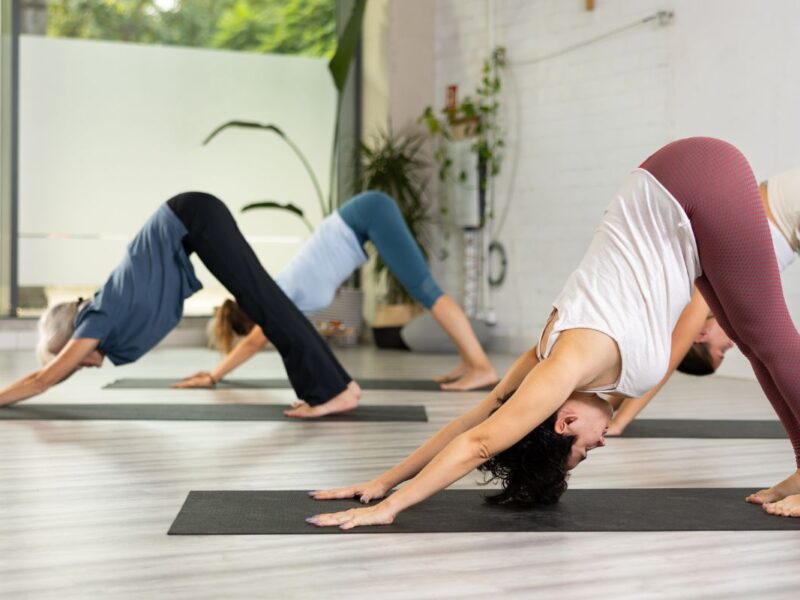Supta Vajrasana, also known as the Sleeping Thunderbolt Pose, is a yoga asana that combines flexibility, balance, and spiritual awareness. This pose offers numerous physical and spiritual benefits, provided it is practiced mindfully and with care. Here is a detailed guide on how to perform Supta Vajrasana:
Steps:
Starting Position:
Begin by sitting in Vajrasana, a kneeling position where your buttocks rest on your heels and your spine is upright.
Bend Back Slowly:
Slowly bend backward, using the support of your right elbow and arm.
Follow by shifting your weight to the left elbow and arm as you continue to bend backward.
Arch Your Back:
As you bend, arch your back and aim to bring the top of your head to the ground.
Hand Placement:
Place your hands on your thighs to maintain balance and support.
Knee Position:
Try to keep your knees in contact with the floor.
If necessary, you can gently separate your knees to avoid straining the muscles and ligaments in your thighs and knees.
Relax and Breathe:
Close your eyes and relax your body completely.
Breathe deeply and slowly while maintaining the final position.
Returning to Starting Position:
To return to the starting position, reverse the order by breathing in and using your elbows and arms for support.
Avoid straightening your legs first, as it may dislocate the knee joints.
Start by returning to Vajrasana and then straighten your legs.
Breathing:
Practice deep and slow breathing throughout the posture.
Duration:
For physical benefits, holding the pose for up to one minute is sufficient.
For spiritual benefits, longer practice sessions are recommended.
Beginners should start with only a few seconds in the final position, gradually increasing the duration.
Awareness:
For the physical aspect, focus your awareness on the lower back, abdomen, or your breath.
For the spiritual dimension, concentrate on the Swadhisthana, Anahata, or Vishuddhi chakras.
Sequence:
Follow Supta Vajrasana with a forward bending asana to complete your yoga practice.
Contra-indications:
Avoid practicing this pose if you suffer from conditions such as sciatica, slipped disc, sacral ailments, or knee complaints.
Benefits:
Supta Vajrasana offers various benefits, including:
Massaging abdominal organs helps alleviate digestive ailments and constipation.
Toning spinal nerves and increasing back flexibility.
Realignment of rounded shoulders.
Positive impact on neck nerves and the thyroid gland.
Stretching and expanding the chest for improved lung capacity benefits those with asthma and bronchitis.
Loosening up the legs for comfortable meditation postures.
Enhancing creativity and intelligence.
Redirecting sexual energy towards spiritual purposes.
Note:
The word “Supta” in Sanskrit means “sleeping,” while “Vajra” refers to the nerve and energy pathway connecting the sexual organs to the brain.
Variation:
An intensified variation of Supta Vajrasana involves placing the back of the head (rather than the top) on the floor in the final position. Here are the steps for this variation:
Join your hands together and place them under the back of your head, or fold your arms comfortably above your head.
Try to keep your knees on the ground.
Close your eyes and relax your entire body.
Maintain deep and slow breathing in the final position.
This variation intensifies the stretch in the abdominal region and can be practiced following the basic form. It’s often recommended to spend equal time in each pose when practicing both the basic and the intensified variation.
Learn to Know More about Yoga Asana You Can Visit the Best Yoga School in Rishikesh and Join 100 Hour Yoga Teacher Training in Rishikesh and 200 Hour Yoga Teacher Training in Rishikesh and 300 Hour Yoga Teacher Training in Rishikesh



